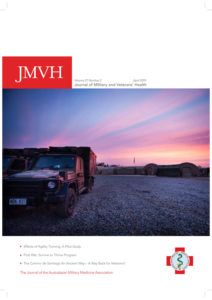The Camino de Santiago An Ancient Way – A Way Back for Veterans?
Keywords: camino de santiago, mental health, pilgrimage, veterans’ health Preface This article is based on the Sir Edward ‘Weary’ Dunlop Award winning presentation delivered at the annual conference of the Australasian Military Medical Association, Brisbane October 2017. Introduction Transitioning from service in the military back to civilian life can be an extremely challenging period for… Read more »




 Download the whole edition here.
Download the whole edition here.


